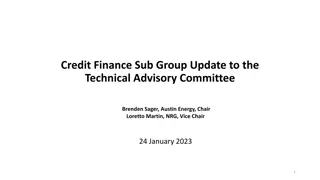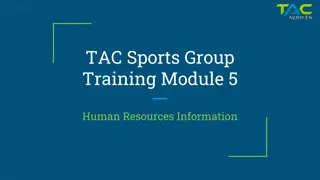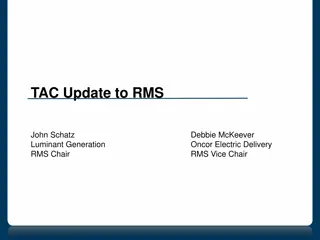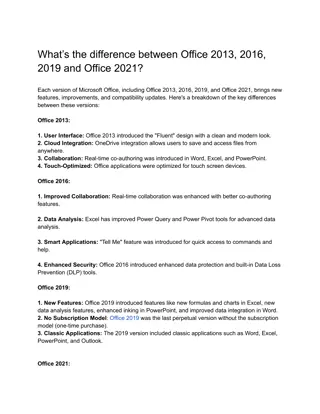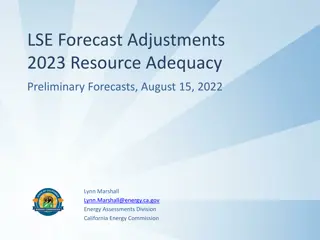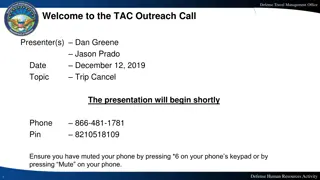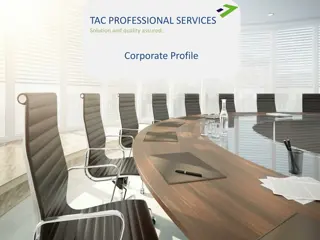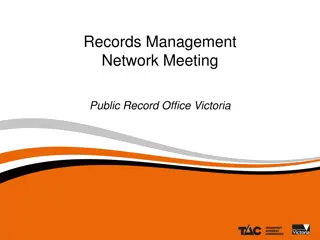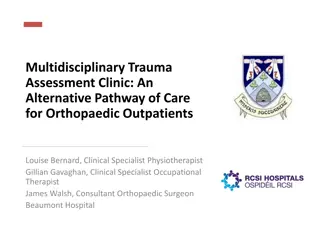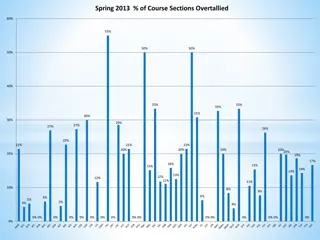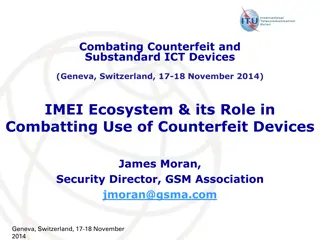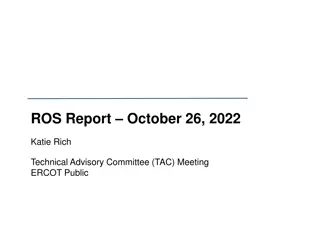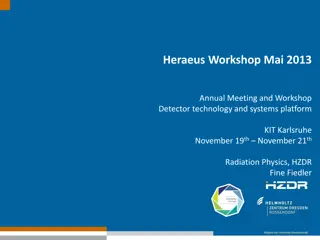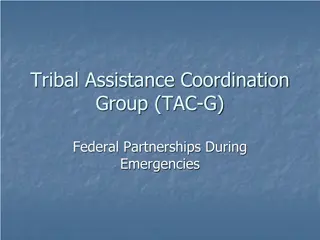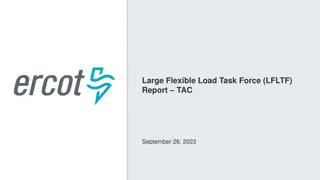
Update on Travel Modelling Group Technical Advisory Committee
"Stay informed with the latest updates from the Travel Modelling Group Technical Advisory Committee regarding network development, model deployment, toolbox tools, transit lines, and more. Explore key insights on recent progress and agenda items discussed in the November meeting."
Download Presentation

Please find below an Image/Link to download the presentation.
The content on the website is provided AS IS for your information and personal use only. It may not be sold, licensed, or shared on other websites without obtaining consent from the author. If you encounter any issues during the download, it is possible that the publisher has removed the file from their server.
You are allowed to download the files provided on this website for personal or commercial use, subject to the condition that they are used lawfully. All files are the property of their respective owners.
The content on the website is provided AS IS for your information and personal use only. It may not be sold, licensed, or shared on other websites without obtaining consent from the author.
E N D
Presentation Transcript
1 TRAVEL MODELLING GROUP TECHNICAL ADVISORY COMMITTEE November 13, 2013
2 Today s Agenda Update on Recent Progress 2012 Base Network Development City of Toronto Model Deployment and First Impressions Update on NCS 11 GTAModel Version 4.0 Workplan
3 Update on Recent Progress New Toolbox Tools: Geo Renumber Nodes: renumbers nodes based on geography Check Functions tool (and XTMF module) for ensuring that all functions (VDF, TPF, TTF) referenced in a scenario are defined in the emmebank. Generate Lines from GTFS: tool used to create line itineraries in the 2012 network Network Editing library for Python scripts
4 Update on Recent Progress 2012 Network (Transit Lines) For agencies with GTFS data, full-day itineraries are being developed Several agencies have draft networks sent to them for review: TTC GO Transit YRT MiWay Still in the pipeline: Brampton Durham (non GTFS) HSR Oakville (non-GTFS) Milton (non-GTFS) Burlington (non-GTFS)
5 City of Toronto Model Deployment The model has been deployed The city is currently validating the results First impressions?
6 Update on NCS11 A revision is required to handle transit ROW encoding issues. Proposed solution: use upper-case modes to flag links with transit-only lanes A memo was circulated late October with no objections Additionally, the standard for transit line IDs needs to be re- visited to take into account full-day service: More agencies than just the TTC have 3-digit route numbers
7 Update on NCS 11 Updated table of modes Code c Type Auto Auxiliary Auto Auxiliary Auto Auxiliary Auto Auxiliary Auto Auxiliary Auto Transit Transit Transit Transit Description Personal vehicle, any occupancy Code Type Auxiliary Transit Auxiliary Transit Auxiliary Transit Auxiliary Transit Auxiliary Transit Auxiliary Transit Transit Transit Transit Transit Unassigned Reserved for possible future use Unassigned Reserved for possible future use Unassigned Reserved for internal use Unassigned Reserved for internal use Description Bicycle Transfer between two lines for the same transit agency k Light/medium truck e t Heavy truck f Transfer between two transit agencies u HOV2+ personal vehicle h Walk mode on centroid connector v HOV3+ personal vehicle i Walk mode on road network link w LOV (<2 or <3 depending on HOV definition used) Local buses Alternative mode for inter-city buses (e.g., GO) Premium bus service (not GO or intercity) Alternative mode for buses (e.g., VIVA) Standard-gauge light rail vehicles (e.g. Metrolinx LRV) TTC-guage streetcars Subway Commuter rail (e.g., GO or VIA) j b g p q Walk from park & ride lot to transit station Transit-only lane flag for mode 'b' Transit-only lane flag for mode 'q' Transit-only lane flag for mode 'l' Transit-only lane flag for mode 's' y B Q L S G P x X Transit Transit Transit Transit Auxiliary Transit l s m r Auto access to transit a
8 Update on NCS 11 Updated table of vehicles Description Length (m) ID Name Mode PCEQ Seated Total 332 1 GoTrain12 r 0 1,900 1,900 12 car GO Train 280 2 GoTrain10 r 0 1,600 1,600 10 car GO Train 138 3 Sbwy 6 TR m 0 400 1,100 Subway, 6 car TR 138 4 Sbwy 6T1 m 0 400 1,000 Subway, 6 car T1 Eglinton Crosstown LRV 92 5 Sbwy 4T1 m 0 260 670 Subway, 4 car T1 51 6 SRT train m 0 120 220 ICTS Train (SRT) ??? 7 MtroLnxLRV l ??? ??? ??? Std. Guage LRV 28 TTC Low-floor articulated LRV 8 TTC LFLRV s ??? 70 250 Streetcar LFLRV 23 9 TTC ALRV s 3.5 60 110 Streetcar ALRV 15 10 TTC CLRV s 3 45 75 Streetcar CLRV 13 11 DblGoBus g 2.5 80 80 Double-decker GO Bus 13 12 GoBus g 2.5 55 55 GO Bus 18 13 VIVA 60ft q 3 55 70 VIVA Bus 60ft 12 14 VIVA 40ft q 2.5 35 45 VIVA Bus 40ft 18 15 Artic Bus b 3 55 85 Articulated Bus 12 16 Bus 40ft b 2.5 35 55 Bus, 40ft 9 17 Bus 30ft b 2.5 25 40 Bus, 30ft
5 GTAMODEL V4.0
10 Work Plan November December January February 18 - 22 25 - 29 2 - 6 9 - 13 16-20 23 - 27 30 - 3 6 - 10 13 - 17 20-24 27-31 3 - 7 10 - 14 17 - 21 24 - 28 Task 1 2 3 4 5 6 7 8 9 10 11 12 13 14 15 0. Network Models Network Estimation 1. Synthesis 2. Car Ownership 3. PORPOW 4. PORPOS 5. NWS Location Choice 6. Rail Access Station Choice 7. TASHA - Activity Generation 8. TASHA - Activity Scheduling 9. TASHA - Mode Choice, etc. 10. External Trips 11. Special Generators 12. Convergence 13. Model system testing (TMG) TMG Staff (James or Peter) EJM & TMG Staff (Eric + James or Peter) Prof. Khandker Habib Prof. Eric Miller All TMG Staff (Eric, James, & Peter) Model deployment by March 3, 2014
11 THANK YOU!

